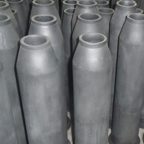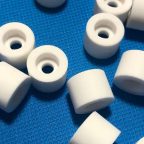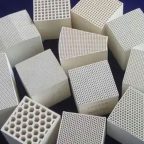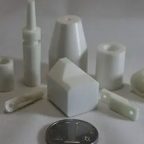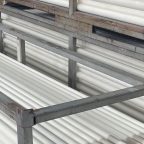What industries are ceramic parts generally used in? Our ceramic parts can be divided into ordinary ceramic parts and precision ceramic parts. In which industries are these ceramic parts generally used? Next, Pintejin Ceramics, a manufacturer specializing in the production of zirconia ceramics and alumina ceramics, will tell you which industries the key ceramic parts are generally used in.
Alumina ceramic parts
- Which industries are ceramic parts generally used in: Ceramic parts mainly refer to those mainly used in chemical plants for filtration and purification, as well as for grinding materials.
- Building-sanitary ceramics: such as bricks and tiles, drainage pipes, face bricks, exterior wall tiles, sanitary ware, etc.;
- Chemical (chemical) ceramics: acid-resistant containers, pipes, towers, pumps, valves and Acid-resistant bricks, ash, etc. for lining the reaction pot;
- Electric porcelain: used for insulators on high and low voltage transmission lines in the power industry. Motor bushings, pillar insulators, low-voltage electrical and lighting insulators, as well as telecommunication insulators, radio insulators, etc.;
- Chemical porcelain: porcelain crucibles, evaporating dishes, combustion boats, grinding bodies, etc. for chemical laboratories;
- Refractory materials: refractory materials used for various high-temperature industrial kilns;
- Special ceramics: special ceramic products used in various modern industries and cutting-edge science and technology, including high-alumina oxy-porcelain, magnesia-based porcelain, titanium-magnesium Stone porcelain, zircon porcelain, lithium porcelain, magnetic porcelain, metal ceramics, etc.
Zirconia ceramic ring
Classification of ceramic parts: There are many types of ceramic parts, which are classified into the following series according to raw materials:
- Oxide ceramics: mainly include alumina ceramics, zirconia ceramics, mullite ceramics, etc.;
- Enzyme ceramics: mainly include silicon carbide ceramics, aluminum oxide ceramics, and boron ceramics;
- Carbide ceramics: mainly include silicon carbide ceramics, titanium carbide ceramics, boron carbide ceramics, etc.;
- Boride ceramics : There are mainly titanium boride ceramics, zirconium boride ceramics, etc.
The above is about the applications in which ceramic parts are generally used by Pintejin ceramic manufacturers. I hope it can help you. Pintejin Ceramics is a professional manufacturer of industrial ceramics, mainly engaged in the research and development and production of zirconia ceramics and alumina ceramics. We can process ceramic products according to your drawings, specializing in the production of high-precision ceramic rods, ceramic tubes, ceramic rings, ceramic plates, ceramic flanges, ceramic nozzles, and customized precision ceramic parts, etc.
Pintejin machining ceramic service include : Alumina Ceramic Parts, Zirconia Ceramic, Silicon Carbide Ceramic, CNC Machined Aluminum Nitride Ceramic, Machinable Ceramic Parts, Glass Ceramic,Macor Ceramic,Powder Metallurgy Dies,Ceramic Injection Molding,Ceramic Dry Pressing,Ceramic Extrusion Dies
